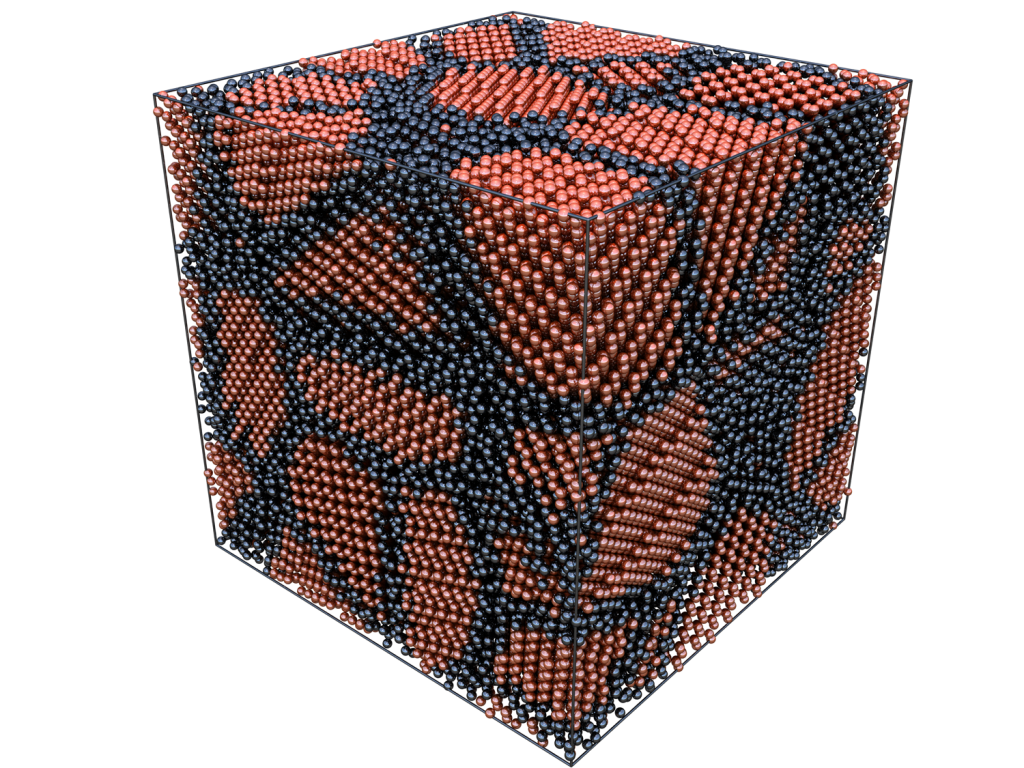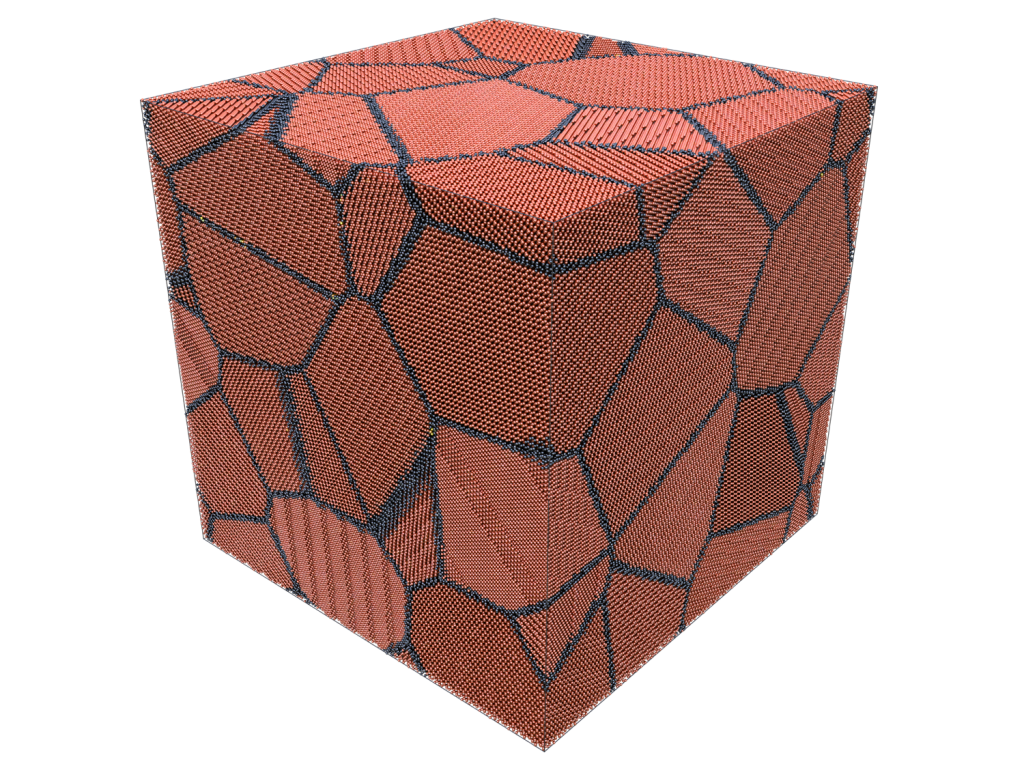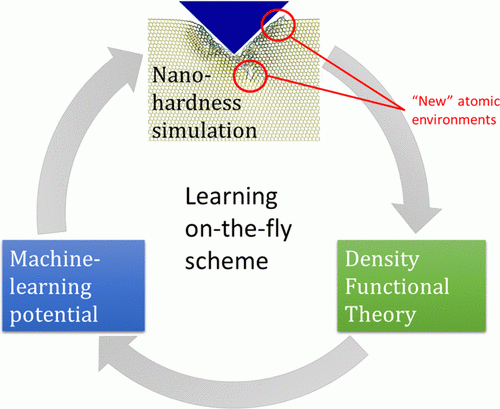ML potentials in application to polycrystalline and composite materials
Accurate description of mechanical properties of polycrystalline materials
Superhard materials are the most important component in many industrial applications. Atomistic simulations can predict properties of single crystals only. New procedure of simulation of polycrystalline compounds (composites, heterogeneous compounds, grain boundaries) will allow understand the way towards improving properties.
We are using Machine Learning Interatomic Potentials (MLIP) to simulate mechanical properties of polycrystals of various compositions.
Main contributor is Faridun Jalolov
 |
 |
Nanohardness from First Principles with Active Learning on Atomic Environments (J. Chem. Theory Comput. 2022, 18, 2, 1109–1121)
We propose a methodology for the calculation of nanohardness by atomistic simulations of nanoindentation. The methodology is enabled by machine-learning interatomic potentials fitted on the fly to quantum-mechanical calculations of local fragments of the large nanoindentation simulation. We test our methodology by calculating nanohardness, as a function of load and crystallographic orientation of the surface, of diamond, AlN, SiC, BC2N, and Si and comparing it to the calibrated values of the macro- and microhardness. The observed agreement between the computational and experimental results from the literature provides evidence that our method has sufficient predictive power to open up the possibility of designing materials with exceptional hardness directly from first principles. It will be especially valuable at the nanoscale where the experimental measurements are difficult, while empirical models fitted to macrohardness are, as a rule, inapplicable.
